Live on the homepage now!
Reader Supported News
Barring appeal, Jan. 6 committee will soon have access to information behind Trump’s disinformation campaign
Judge Tanya Chutkan determined Trump does not have the authority to overrule President Biden’s decision to waive executive privilege and release the documents to Congress, Politico reported Tuesday night. The sought-after documents include files from Trump’s former chief of staff Mark Meadows, adviser Stephen Miller, and White House deputy counsel Patrick Philbin. They also contain call and visitor logs.
“Presidents are not kings, and Plaintiff is not President,” Judge Chutkan wrote in the ruling.
The National Archives has indicated it will turn over the material to the committee on Friday, barring court intervention. Lawyers for Trump immediately appealed Judge Chutkan’s decision. A spokesman said Trump “remains committed to defending the Constitution & the Office of the Presidency, & will be seeing this process through.”
Still, Tuesday’s ruling is a major victory for the Jan. 6 committee, which could soon have crucial access to once-private information about the Trump White House’s discussions and planning related to its massive disinformation and election sabotage effort to overturn the results of the 2020 election and deliver Trump a second term in office.
In Chutkan’s ruling, she outlined Trump’s concerted efforts to cast doubt on the election results, which included him urging his supporters to put pressure on state lawmakers to not certify Biden’s election victory. In the wake of those actions, Trump supporters headed to the Capitol, which was breached on Jan. 6, ending in violence. Hundreds involved have since been charged and arrested.
The Jan. 6 committee is investigating the root causes of the insurrection, including a look at whether Trump or anyone else within the government is to blame. Last summer, the committee requested the documents from the National Archives. Biden declined to invoke executive privilege to withhold them from the committee.
In response, Trump sued the Jan. 6 committee and the National Archives. He claimed that as a former president he should be granted executive privilege over the documents despite Biden’s decision, arguing that a Richard M. Nixon-era Supreme Court ruling decided presidents retain a “residual” interest in the confidentiality of their White House records. Trump on Monday night tried to preemptively ask for an administrative stay on Chutkan’s ruling … before she had even made it. Chutkan struck down the attempt in less than two hours, noting that she was moving “expeditiously” to come to a decision. She did so on Tuesday night, and it wasn’t in the former president’s favor.
“At bottom, this is a dispute between a former and incumbent President. And the Supreme Court has already made clear that in such circumstances, the incumbent’s view is accorded greater weight,” Chutkan wrote, citing the Nixon-era ruling.
The committee investigating Jan. 6 has recently issued subpoenas to several prominent Trump World figures — including senior adviser Stephen Miller, former national security adviser Michael Flynn, legal scholar John Eastman, Jason Miller, and more — signifying an acceleration in its inquiry into the causes of the Capitol attack.
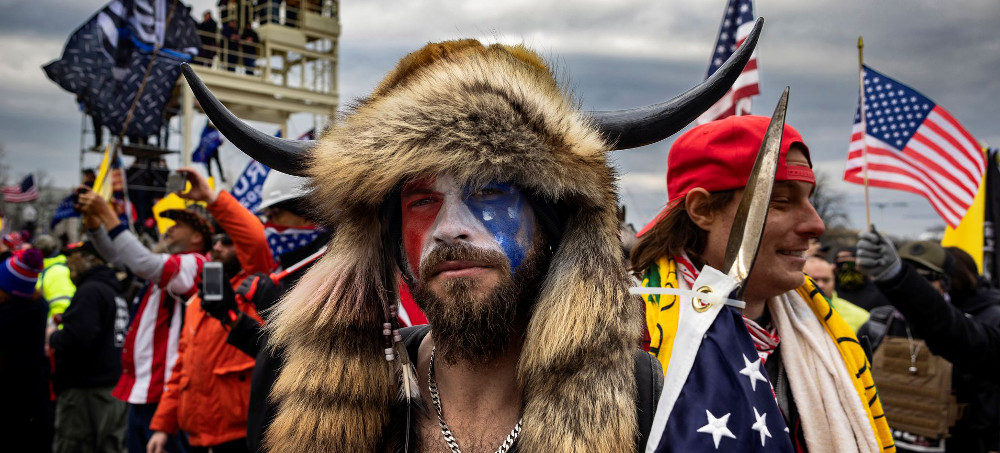 Jacob Chansley, known as the "QAnon Shaman," at the Capitol on Jan. 6. (photo: Brent Stirton/Getty)
Jacob Chansley, known as the "QAnon Shaman," at the Capitol on Jan. 6. (photo: Brent Stirton/Getty)
A judge will decide on Wednesday if Scott Fairlamb should serve 44 months, as prosecutors seek a 51-month term for Jacob Chansley
At a court hearing on Wednesday, government lawyers will ask a judge to hand down a 44-month prison sentence for Scott Fairlamb, a former mixed martial arts fighter from New Jersey, who pleaded guilty in August to assaulting a police officer.
He was screaming at officers, in footage caught by their body-worn cameras, before shoving one and then punching him in the face.
He is to be sentenced by federal judge Royce Lamberth in Washington DC on Wednesday morning.
Separately, prosecutors in a late-night court filing recommended a four-year, three-month sentence for Jacob Chansley, the intruder at the Capitol attack who was seen around the world invading Congress, shirtless, wearing a horned headdress and furs, and heavily tattooed.
Chansley, of Phoenix, Arizona, was known to some at the time as the so-called “QAnon Shaman”.
He pleaded guilty in September to obstructing an official proceeding when he took part in the assault.
Lamberth, who is also handling Chansley’s case, will sentence him on 17 November.
In a court filing, Fairlamb’s defense lawyer asked the judge to “take into consideration the approximate 11 months the defendant has already served in custody” and not add additional time.
Attorney Harley Breite said his client had accepted responsibility for his actions.
Chansley’s attorney, Albert Watkins, said in a Tuesday court filing that Chansley should be released “as soon as possible”, noting that Chansley will have spent more than 10 months in pre-trial detention.
“I can say with confidence that Mr Chansley is in dire need of mental health treatment,” Watkins stated.
About 700 people have been arrested over the attack on the Capitol where Congress was meeting to certify Joe Biden’s November 2020 victory over Trump in the presidential election.
So far, about 120 people have pleaded guilty and two dozen have been sentenced. Most of the guilty pleas have involved non-violent misdemeanor offenses carrying short jail sentences or probationary sentences.
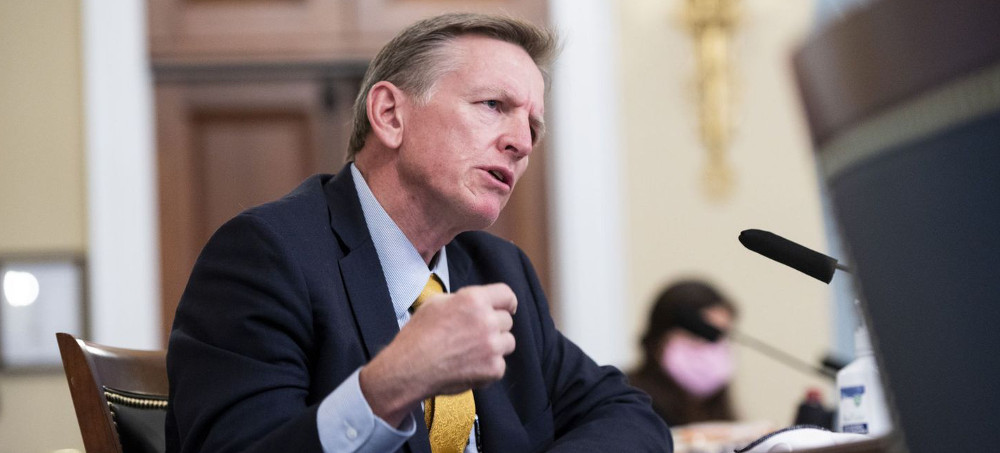 Representative Paul Gosar shared a photoshopped, animated video that depicts him killing Rep. Alexandria Ocasio-Cortez. (photo: Bill Clark/CQ Roll Call)
Representative Paul Gosar shared a photoshopped, animated video that depicts him killing Rep. Alexandria Ocasio-Cortez. (photo: Bill Clark/CQ Roll Call)
Ocasio-Cortez responded Monday night after arriving in Glasgow, Scotland, as part of a congressional delegation. Gosar, she said, will probably “face no consequences” because House Minority Leader Kevin McCarthy (R-Calif.) “cheers him on with excuses.”
A Gosar staffer defended the video Monday night, dismissing claims that it glorifies violence.
“Everyone needs to relax,” Gosar’s digital director, Jessica Lycos, said in a statement.
A Twitter spokesperson said late Monday that a “public interest notice” had been placed on Gosar’s tweet because it violates the company’s policy against hateful conduct.
Gosar has long drawn criticism for his extremist views, including his spreading of conspiracy theories about the Jan. 6 attack on the U.S. Capitol by a pro-Trump mob and the deadly white-nationalist rally in Charlottesville in 2017. In February, he appeared at an event whose organizer called for white supremacy. Gosar later distanced himself from the organizer’s remarks.
The congressman’s Sunday night post — which he shared on Twitter and Instagram — appeared to go further than his previous contentious remarks and social media posts, raising the specter of political violence in a manner similar to former president Donald Trump’s frequent allusions to armed revolution.
“Any anime fans out there?” Gosar said in the tweet in which he shared a link to the video.
The 90-second clip appears to be an altered version of the opening credits of the Japanese animated series “Attack on Titan.” The show revolves around a hero who sets out to destroy the Titans, giant creatures that have devoured nearly all of human civilization. In recent years, Internet users have turned the show’s opening credits into a popular meme.
In the video Gosar posted, the congressman is depicted fighting the Titans alongside Republican Reps. Marjorie Taylor Greene (Ga.) and Lauren Boebert (Colo.). In one scene, Ocasio-Cortez’s face is edited over one of the Titans’ faces. Gosar flies into the air and slashes the Titan in the back of the neck, killing it.
In another scene, Gosar swings two swords at a foe whose face has been replaced by that of Biden.
The animated scenes of the video are interspersed with real-life footage of Border Patrol officers, some standing shoulder-to-shoulder and others on horseback rounding up migrants at the U.S.-Mexico border.
In one scene, footage of migrants crossing the Rio Grande is overlaid with what appears to be splattered blood. In another, the words “drugs,” “crime,” “poverty,” “money,” “murder,” “gangs,” “violence” and “trafficking” flash across the screen. The video also features shots of Gosar, the Capitol and migrant caravans.
Ocasio-Cortez responded Monday night, noting that while she was traveling to Glasgow, “a creepy member I work with who fundraises for Neo-Nazi groups shared a fantasy video of him killing me.”
In June, Gosar denied that he planned to attend a fundraiser with a group that promotes white-nationalist ideas, despite an invitation for the event that featured him alongside Nick Fuentes, a far-right operative who leads America First.
The congressman will “face no consequences bc @GOPLeader cheers him on with excuses,” Ocasio-Cortez tweeted, without naming Gosar.
“Fun Monday! Well, back to work bc institutions don’t protect woc,” she said, referring to women of color.
In a follow-up tweet, Ocasio-Cortez listed several times she was accosted or harassed at the Capitol by GOP members of Congress, including Greene and Rep. Ted Yoho (Fla.).
“All at my job,” she tweeted, along with an upside-down smiley face. “[And] nothing ever happens.”
Twitter spokesperson Trenton Kennedy said late Monday that the company has “placed a public interest notice on this Tweet as it violates our hateful conduct policy.”
“As is standard with this notice, engagements with the Tweet will be limited. People will be able to Quote Tweet the Tweet, but will not be able to Like, Reply or Retweet it,” Kennedy said in an email.
The message placed on Gosar’s tweet reads: “This Tweet violated the Twitter Rules about hateful conduct. However, Twitter has determined that it may be in the public’s interest for the Tweet to remain accessible.”
Rep. Eric Swalwell (D-Calif.) criticized Gosar in a tweet Monday morning in which he also tagged McCarthy.
“Happy Monday in America, where @GOPLeader McCarthy’s colleague just posted a video of himself swinging two swords at President Biden,” Swalwell said in the tweet. “These blood thirsty losers are more comfortable with violence than voting. Keep exposing them.”
Rep. Ted Lieu (D-Calif.) also denounced the video, arguing that “in any workplace in America, if a coworker made an anime video killing another coworker, that person would be fired.”
“This is sick behavior from Rep. Paul Gosar,” Lieu tweeted.
Scores of Twitter users also flagged Gosar’s tweet as a potential violation of the social media service’s rules, which prohibit violent threats and the glorification of violence. Instagram’s community guidelines prohibit “credible threats of violence, hate speech and the targeting of private individuals.”
Lycos, Gosar’s digital director, dismissed the criticism in a statement Monday night.
“We made an anime video,” she said. “Everyone needs to relax. The left doesn’t get meme culture. They have no joy. They are not the future. It’s a cartoon. Gosar can’t fly and he does not own any light sabers. Nor was violence glorified. This is about fighting for truth.”
Spokespeople for McCarthy and Facebook, which owns Instagram, did not immediately respond to requests for comment.
After tweeting about the lack of repercussions for lawmakers who harass or threaten their colleagues, Ocasio-Cortez added her personal thoughts about Gosar.
“This dude is a just a collection of wet toothpicks anyway,” she said. “White supremacy is for extremely fragile people & sad men like him, whose self concept relies on the myth that he was born superior because deep down he knows he couldn’t open a pickle jar or read a whole book by himself.”
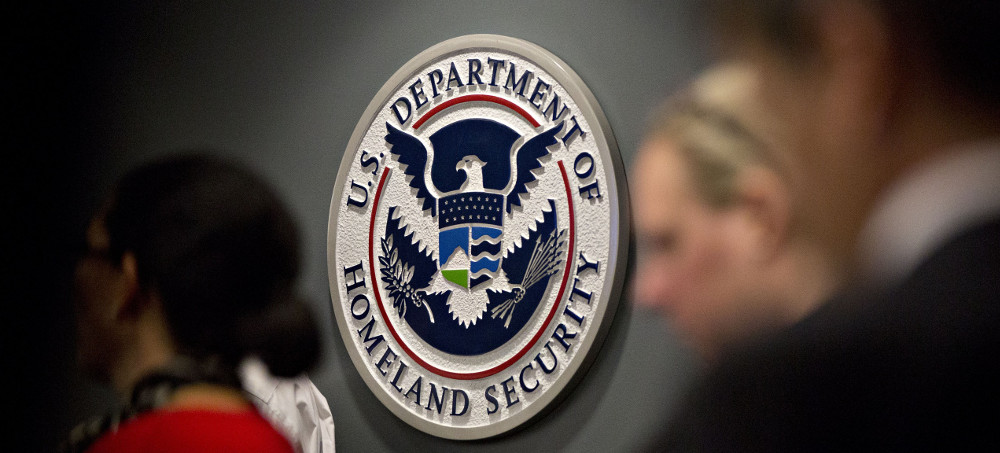 Prince George's County public schools used Department of Homeland Security tools to 'support monitoring social media.' (photo: Bloomberg)
Prince George's County public schools used Department of Homeland Security tools to 'support monitoring social media.' (photo: Bloomberg)
Administrators in Prince George’s County say they wanted help monitoring school safety — but sweeping surveillance could land kids in gang databases and families in deportation proceedings.
Anthony Tilghman, a local education activist, posted Gover’s email in a community Facebook group. The email listed other measures, including the temporary addition of extra school security to the two high schools and a request to the local police department for reinforcements. But it was the casual reference to “Homeland Security” that stood out.
Two years ago, the Prince George’s County Council voted unanimously to bar all county agencies from working with U.S. Immigration and Customs Enforcement, a subdivision of the Department of Homeland Security. But if state and local homeland security divisions collect student data, agents could enter that information into any of the many federal DHS databases, creating a backdoor route for federal surveillance and immigration enforcement.
Prince George’s County Public Schools spokesperson Meghan Gebreselassie confirmed in an email to The Intercept that “Homeland Security” was contacted to “support monitoring social media for student conflicts/ to mitigate a possible school fight.” While the county has its own Office of Homeland Security, Gebreselassie clarified that the school district works with a separate Homeland Security division housed within the Prince George’s County Police Department. She said the district contacts the office “regularly for assistance when it comes to ensuring student safety.”
“This warrantless, dragnet surveillance of minors is a clear violation of their civil rights and is an immediate threat to undocumented students and students with undocumented family members,” wrote Daniel Greene, a Prince George’s County parent, in an email to Board of Education CEO Monica Goldson and 13 board members. Greene raised concerns that the district’s practices were in violation of the 2019 ordinance barring cooperation with ICE and said that he would be filing Freedom of Information Act requests for more information. “I don’t believe federal anti-terror and anti-immigration surveillance is in any way suited to the task of settling fights among minors,” he wrote.
Goldson responded by writing that the district would review its actions to ensure that they were in compliance with the 2019 ordinance and that it is the district’s “desire and intent” to follow the law’s expectations and guidelines.
Gebreselassie referred The Intercept’s questions about the collection of social media posts to the police. The Prince George’s County Police Department did not return multiple requests for comment.
Civil rights and legal advocates told The Intercept that they had not heard previously of homeland security offices surveilling students following school fights and warned that teenagers would likely have little idea of how their information is later used.
“Given how central social media is to young people’s lives, protecting people’s social media posts and protecting kids from state surveillance is extremely important,” said Vera Eidelman, an American Civil Liberties Union staff attorney focused on protecting free speech online. “It’s even more pernicious for kids who tend to say any number of really strongly felt things in the moment.”
Data collected through youth surveillance could be used to bolster already shoddy and discriminatory gang databases, national experts warn. Individuals, typically Black and Latino men, are frequently added to these police databases for trivial matters like standing on certain street corners, having particular tattoos, or meeting with someone suspected to be in a gang. Even though the databases are well known to be riddled with inaccurate information, federal agencies still routinely consult them.
“Allegations of potential gang involvement are where we historically have seen and continue to see real collaboration between the Prince George’s County police and ICE,” said Nick Katz, legal director of CASA, an immigrant advocacy organization. “Often individuals will be flagged for baseless gang allegations — like being in a picture with someone else believed to be in a gang — and then entered into local and national databases which can be used in any way [officials] want.” Katz had not heard of homeland security forces surveilling students after school fights before but said he was not surprised given the way high school students of color are routinely branded as public safety threats.
Greene, who studies technology and surveillance as an assistant professor at the University of Maryland, knows from his professional work how federal agencies can leverage the data they collect through surveillance. In 2017, for example, ICE used surveillance data to arrest and deport Rómulo Avelica-González, a father of four who had been living in California for 25 years.
“The first thing a parent said to me when I brought this up was, ‘Well, you know this might sound scary, but if people weren’t involved in those fights, then they’ve got nothing to worry about,’” Greene told The Intercept. “I think that fundamentally misunderstands what this surveillance is for and how it works.”
Though it is now the largest federal law enforcement organization and the third-largest federal employer in the United States, the Department of Homeland Security did not exist before 2003. Feeling they had been caught flat-footed by the 9/11 attacks, federal leaders launched the new agency with a mandate to coordinate anti-terrorism efforts and doled out hundreds of millions of dollars to establish so-called fusion centers, which collect, analyze, and share information about alleged terror threats. Blurring the jurisdictional boundaries between local, state, and federal law enforcement agencies, the centers encourage sharing as much data as possible between all three.
Two decades in, critics charge fusion centers as yet another invasive and ineffective national security measure. A two-year bipartisan Senate investigation released in 2012 concluded that fusion centers had “yielded little, if any, benefit to federal counterterrorism intelligence efforts” and often collected intelligence of “uneven quality – oftentimes shoddy, rarely timely, sometimes endangering citizens’ civil liberties and Privacy Act protections.” In 2020, The Intercept reported that fusion centers were being used to monitor racial justice organizers and Black Lives Matter protests.
“Far from the lofty justifications given for their existence—securing the homeland and so on—the titles of the reports [fusion centers have] produced suggest a focus on criminal activity (supposed or otherwise) so mundane it’s at times comical,” wrote Ken Klippenstein in an investigation for The Nation earlier this year. Klippenstein, now a reporter at The Intercept, found that fusion centers rarely produced reports focused on counterterrorism, opting instead for investigations with titles like “Subscribers of Black Extremism Collaborate Musically” and “Criminal and Violent Extremist Use of Emojis.”
Gover, an operations supervisor for the Prince George’s County school district’s security division, said in his email that he had communicated with “A/Sgt Tilus of Homeland Security” about social media monitoring. The only county police officer listed in OpenPayrolls and other databases with that name is Wantalex Tilus, a Prince George’s County police corporal. In 2011, Tilus was sued by a parent for handcuffing and beating her seventh grade son in a civil case that was ultimately dismissed in 2015. Gebreselassie, the Prince George’s County Public Schools spokesperson, did not answer multiple requests for comment about the officer’s identity. Tilus referred The Intercept to the police department press team, which did not return requests for comment.
In a statement to The Intercept, a spokesperson for the federal Department of Homeland Security said their department “is not participating in social media monitoring related to PG County schools” but did not deny that it could review any data collected. The spokesperson wrote that the state-operated fusion centers exist “for the receipt, analysis, gathering and sharing of threat-related information between federal, state, local, tribal, territorial, and private sector partners.”
Prince George’s County Council Member Deni Taveras, the lead sponsor of the legislation barring cooperation with ICE, did not return a request for comment. The county’s Board of Education Chair Juanita Miller also did not return requests for comment.
An example of how the sharing of this flawed data can be used was on display in March 2017, when six ICE agents raided Wilmer Catalan-Ramirez’s home in Chicago, arrested him, and placed him in deportation proceedings. Catalan-Ramirez’s lawyers later learned that his arrest came from Chicago police erroneously placing him in their local gang database, a measure that effectively stripped him of sanctuary privacy protections he would have otherwise had. The city later acknowledged its mistake, and Catalan-Ramirez was released from ICE custody in 2018. This past spring, national civil rights groups organized a petition calling on DHS to end its practice of prioritizing for immigration enforcement those alleged to be involved with gangs.
“The thing about bulk data collection is, even if you trust the guys now, you might not later,” said Greene, the parent and University of Maryland assistant professor. “Data is used to build categories, and it all justifies more collection tomorrow. It’s far from being this thing where you’re looking for one bad kid. You’re taking all kids, or certain subsets like young Black and Latino working-class kids, and saying, ‘We’re going to hold on to their socials to build patterns.’”
Faiza Patel, co-director of the Brennan Center for Justice’s Liberty and National Security Program, noted that in the wake of horrific school shootings, private companies raced to develop new social media monitoring software to sell to districts under pressure to take action. These programs purport to help identify potential future shooters, she said, but they have been of dubious quality and invariably capture loads of irrelevant information in their pursuit for red flags.
“You’re talking about kids who are easily misinterpreted, a system where there are significant racial disparities, and you’re basically encouraging this data sharing that’s not vetted,” she said. “How long does this data even follow a kid around? Once you’re in a database, are you forever flagged as being suspicious?”
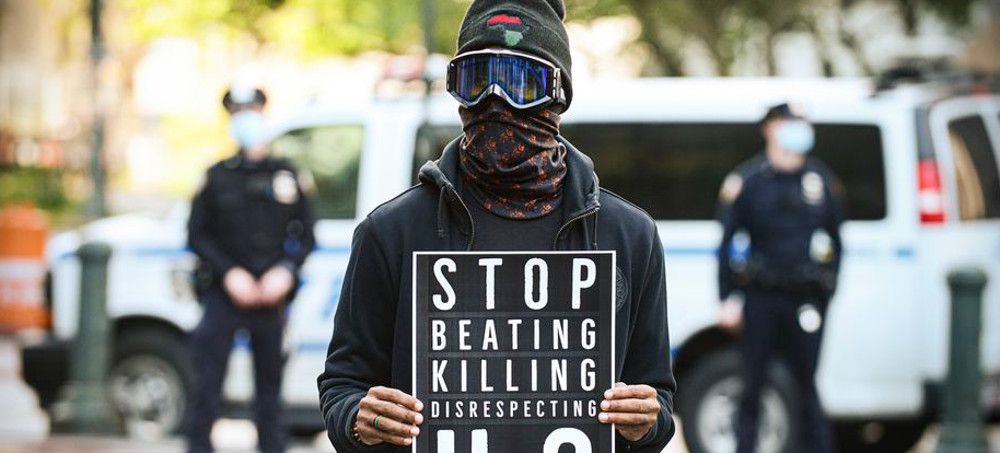 In response to the killing of Ahmaud Arbery in Georgia, protesters marched on NYPD headquarters on May 11, 2020, to decry police brutality against Black people. (photo: Van Sise/Getty)
In response to the killing of Ahmaud Arbery in Georgia, protesters marched on NYPD headquarters on May 11, 2020, to decry police brutality against Black people. (photo: Van Sise/Getty)
As the trial over the killing of Arbery continues, experts say it’s time to rethink the pro-vigilante law at the center of it.
Arbery’s killing in February 2020 ignited national outrage. When a video Bryan recorded from his vehicle while following Arbery went viral online, viewers called it an unequivocal lynching. The graphic footage shows the McMichaels, both carrying guns, pursuing Arbery in a truck after he ran down their street in the mostly white Satilla Shores neighborhood near Brunswick. Following a short chase, the men corner Arbery, and a confrontation between Arbery and Travis McMichael ensues. During the struggle, Arbery is shot three times, twice in the chest, after which he slumps to the ground. It took 74 days after Arbery’s death for the men to be arrested and charged.
Defense attorneys will likely argue that the men’s actions were protected by Georgia’s citizen’s arrest law, which at the time allowed a person to detain someone whom they believe just committed a crime. The attorneys may claim the men acted in self-defense while attempting to carry out a legitimate citizen’s arrest of Arbery, whom they suspected of burglary.
Georgia’s outdated and dangerous citizen’s arrest law — one that was created in an era of slavery and emboldened citizens to act on their worst biases — has since been repealed. The law was replaced with a bill that limits who can detain citizens and when (business owners and workers who witness someone shoplifting or dining and dashing, for example.) But most states still have a version of these laws on the books, and as long as they endure, advocates say they could ultimately have tragic consequences.
Citizen’s arrest laws are ubiquitous, with old roots
Georgia’s citizen’s arrest statute had its origins in the Civil War era. Passed in 1863, when slavery was still considered legal by Southerners despite the Emancipation Proclamation, the law stated that a private person could “arrest an offender if the offense is committed in his presence or within his immediate knowledge.”
“It was a slave-catching law for slaves that attempted to flee,” Joe Margulies, an attorney and professor of law and government at Cornell Law School, told Vox. “It gave citizens the power to grab them. [The law] derives from a racist past.”
Every state has some version of a citizen’s arrest law, though they vary based on the type of crime and whether the citizen must witness the crime directly or just be aware that it happened. In many states, the laws are unclear about how long a citizen is permitted to detain someone, how much probable cause is necessary, and how much force can be used, said Ira P. Robbins, professor of law and justice at American University and the author of an article on citizen’s arrest laws for the Cornell Journal of Law and Public Policy. Many of the laws also don’t specify what it means to carry out a citizen’s arrest or to detain someone while making one.
The laws, according to Robbins, date back to medieval England, where citizens helped the king maintain order by enforcing the laws. The common law doctrine of citizen’s arrest was further developed in the early 19th century, and such statutes have remained on the books even as states laid out more modern systems of law enforcement.
In Alabama, for example, a private person can make a citizen’s arrest “where a felony has committed” — even if they didn’t witness it — and when they have “reasonable cause to believe that the person arrested committed it.” The law specifies that the arrest can be made “on any day and at any time,” outlines the steps that must be taken for a legal arrest, and gives citizens permission to break open doors or windows to capture the alleged offender.
California allows citizen’s arrests if the citizen witnesses a perpetrator committing a misdemeanor, or when a felony “has been in fact committed, and he has reasonable cause for believing the person arrested to have committed it,” according to the state’s penal code.
In New York, a citizen can arrest another person if they believe the suspect committed a felony such as murder, first-degree manslaughter, or rape. It also lays out the circumstances where deadly physical force may be justified: when the citizen believes it is necessary to defend themselves or a third person against physical force in the course of the crime. (They may not if they know that they “may avoid the necessity of so doing by retreating.”)
“I thought that the uproar over Arbery’s murder would lead other states to revisit their statues, but there has not been much [movement],” Margulies said. “It certainly has not prompted a wholesale reexamination of citizen’s arrest laws.”
Citizen’s arrests can go horribly wrong
Arbery’s killing isn’t the first involving Georgia’s citizen’s arrest law. In 2019, Kenneth Herring, a 62-year-old Black man, was killed by Hannah Payne, a 21-year-old white woman, after he left the scene of a car crash because he was experiencing a diabetic emergency. Payne pursued Herring in her vehicle and ordered him out of his car. It’s unclear what happened immediately after that, but Payne shot and killed him. She was indicted on charges of felony murder and malice murder, among others, and is still awaiting trial. Critics say she racially profiled Herring.
“Given what we know about implicit and explicit bias, allowing people to chase after someone and seize them based on what they believe was a felony is a recipe for some predictable number of cases just like this,” Margulies said. “With the automatic association between blackness and crime, seeing a Black man run by or drive away will lead to some predictable number of cases of folks concluding he’s committing a felony. That’s the real problem.”
In 2012, neighborhood watch volunteer George Zimmerman, a mixed-race Hispanic man, fatally shot 17-year-old Trayvon Martin in Florida after calling 911 and reporting “a suspicious person”; the police dispatcher instructed him not to approach Martin. Zimmerman, who was later acquitted of second-degree manslaughter, said he acted in self-defense.
“When you look at these cases, it’s about people trying to protect an area — not protecting it from a crime, but protecting it from certain types of people,’’ Rashawn Ray, a sociology professor at the University of Maryland and a senior fellow at the Brookings Institution, told Vox.
Citizen’s arrest laws can also go wrong in other ways — as in 2014, when a man in Virginia burst into a lecture hall at George Mason University Law School carrying handcuffs, pepper spray, and a Taser-like device in order to execute a citizen’s arrest of a professor whom he said had controlled his mind and sexually harassed him. In May 2020, a 22-year-old man in Arizona was shot and killed after he witnessed a hit-and-run and chased five people who ran from the scene in an attempt to detain them.
But in cases with a racial element, the laws are part of the pernicious way that “place, space, and race” intersect, Ray said.
Also factoring into the Arbery trial are Georgia’s open carry law (which makes it legal to openly carry firearms in the state with the proper permits) and “stand your ground” law (which allows for the use of deadly force if a person reasonably believes it is necessary to prevent death or severe bodily injury).
“We will likely hear from the defense attorneys a series of dog whistles about protecting people in that particular community from people who look like Ahmaud Arbery,” Ray said. “With laws like the castle doctrine, people will probably believe that good Samaritans have a right to also defend their neighbors’ property and that the McMichaels were coming to the defense of others. The defense will try to indicate to jurors that [a burglary] could have happened to them.”
The trial judge will instruct the jury on the citizen’s arrest law as it existed at the time of the killing, though Georgia has since repealed and replaced the law.
The protests surrounding Arbery’s death — which preceded those for Breonna Taylor and George Floyd, arguably setting the stage for what was to come in the summer of 2020 — and the nearly two years that have elapsed since then have not inspired a large movement to rethink citizen’s arrest laws.
After the video of Arbery’s killing went viral, South Carolina state Rep. Justin Bamberg introduced legislation to repeal the state’s 1866 citizen’s arrest law. Bamberg said on Twitter that the law was no longer necessary in America’s police state.
In an effort to honor Arbery, New York lawmakers moved to revise the language in the state’s citizen’s arrest statute, calling the law a “dangerous and historically abused practice” that has been “used by racists to advance their bigoted goals.” The bill never advanced.
No matter the verdict, the Arbery trial could draw more attention to the anachronistic rules of citizen’s arrest laws.
“All of these citizen’s arrest cases with a racial element are on the same continuum,” said Ray, of the University of Maryland and Brookings Institution. “They end up in the exact same way. They end up with someone being killed.”
 Danny Fenster, who had been working for local outlet Frontier Myanmar for around a year, was arrested as he was heading home to see his family in May. (photo: Getty)
Danny Fenster, who had been working for local outlet Frontier Myanmar for around a year, was arrested as he was heading home to see his family in May. (photo: Getty)
Fresh charges for Danny Fenster, arrested in May as part of crackdown by junta, carry maximum sentence of life in prison
The military has squeezed the press since taking power in a February coup, arresting dozens of journalists critical of its crackdown on dissent that has killed more than 1,200 people, according to a local monitoring group.
Danny Fenster, who had been working for local outlet Frontier Myanmar for around a year, was arrested as he was heading home to see his family in May and has been held in Yangon’s Insein prison since.
The 37-year-old is already on trial for allegedly encouraging dissent against the military, unlawful association and breaching immigration law.
The additional charges under Myanmar’s anti-terror and sedition laws open Fenster up to a maximum sentence of life imprisonment. The trial is scheduled to begin on 16 November.
“He has become quite thin,” Fenster’s lawyer Than Zaw Aung said on Wednesday.
Fenster was “disappointed” at being hit with the new charges, which were filed on Tuesday, the lawyer added.
The United States urged Myanmar’s junta to immediately free Fenster.
“The profoundly unjust nature of Danny’s detention is plain for all the world to see,” a state department spokesperson told AFP.
“The regime should take the prudent step of releasing him now. His continued detention is unacceptable. Journalism is not a crime.”
The new charges come days after former US diplomat and hostage negotiator Bill Richardson met the junta chief, Min Aung Hlaing, in the capital Naypyidaw, handing the increasingly isolated junta some rare publicity.
Richardson has previously negotiated the release of prisoners and US servicemen in North Korea, Cuba, Iraq and Sudan and has recently sought to free US-affiliated inmates in Venezuela.
“Danny’s case has become emblematic of the utter contempt Myanmar’s military has for independent media,” Emerlynne Gil, Amnesty International’s deputy regional director for research, said in a statement.
Fenster is believed to have contracted Covid-19 during his detention, family members said during a conference call with American journalists in August.
He last spoke with US consular officials by phone on 31 October.
Myanmar has been mired in chaos since the military ousted the elected government, with the junta trying to crush widespread democracy protests and stamp out dissent.
The military has tightened control over the flow of information, throttling internet access and revoking the licences of local media outlets.
More than 100 journalists have been arrested since the putsch, according to Reporting Asean, a monitoring group. 31 are still in detention.
The coup snuffed out the country’s short-lived experiment with democracy, with the civilian leader Aung San Suu Kyi now facing a raft of charges that could see her jailed for decades.
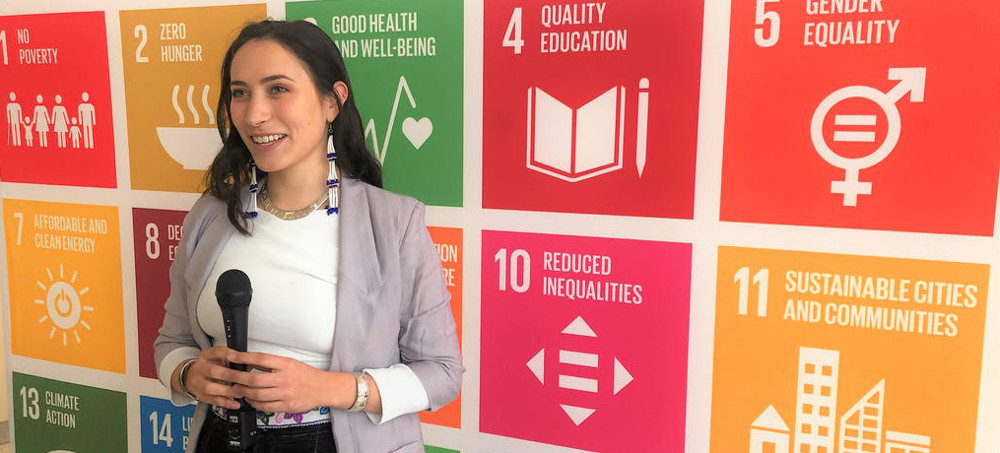 Ruth Miller is among a group of young Indigenous activists who have come to add their voice to COP26. (photo: UN)
Ruth Miller is among a group of young Indigenous activists who have come to add their voice to COP26. (photo: UN)
The 24-year-old Climate Justice Director for the Alaska-based grassroots group, Native Movement, is one of nine young people squeezed into the four-bedroom rental in between attending events at the COP26 UN climate summit.
But even having to stay an hour's drive outside of the main conference venue, they are among the activists who are insisting the politicians, dignitaries, and negotiators hear their stories, voices, and expertise.
Miller grew up in Anchorage, Alaska and is native Dena'ina Athabascan. Some of her roommates here are from New Zealand, or islands in the South Pacific.
They're hanging out in a living room with low wooden furniture covered in mustard-colored velvet cushions, joking about some of their shared experiences as kids who grew up in native communities.
Without planning on it, they all brought different kinds of smoked fish to Scotland: Salmon from Alaska, eel from New Zealand.
But of course, their connections go much deeper than food. They came here with a shared view of how lands and waters are connected, and how to care for them.
"It does seem less like learning new things and more like meeting a long-lost family member that you haven't seen in quite some time," Miller says of the gathering.
Everyone squeezes around the dining table for a family-style meal of takeout Thai food while 23-year-old Tiana Jakicevich leads everyone in a blessing.
Then they talk about logistics for the next day's events — planning how to get to and from the conference site.
They had to raise their own money for this trip and staying in Glasgow was way too expensive.
In some ways, it's a metaphor for their experience of the conference itself. Even though they have had meetings with top officials, these activists are sometimes on the outside looking in, trying to carve out space for their people.
"Being an Indigenous youth at COP is extraordinarily limiting and tokenizing in a number of ways, both by nature of being Indigenous and by being youth," Miller says.
Miller and Jakicevich talk candidly about their shared experience, including of a warming planet. From the Arctic, where Miller is from, to the Southern Hemisphere, where Jakicevich lives.
"While Ruth's ice is melting, our seas are rising. So we are intrinsically connected to the earth and each other through that," Jakicevich says.
Jakicevich woke up recently to news that her small town was in a state of emergency after three months' worth of rain fell in 48 hours. And she has seen more gradual climate-caused changes at home too.
"When I was little we used to go down to the beach and collect Tua Tua," she says.
"It's like a little shellfish and you used to just dig in the sand for them. And every year we kept going back and they moved every year, and then about five years ago we couldn't find them.
"So at this point in time, where we've always been able to collect Tua Tua from, we no longer can any more."
That's in New Zealand. And Alaska is heating up much faster than the rest of the planet.
Miller has seen record-setting wildfires and relocations from land that her people have lived on for generations.
"But, of course, you can't relocate your grandparents' graves. You can't relocate your ancient sacred sites," she says.
"You can't adapt to the places that are lost due to climate change.
"This past year, when I was forced to watch our sitka, our salmon, dying in streams of heatstroke, it was heartbreaking."
That's why these activists put in the work, raised the money, and risked their health to fly to Scotland during a pandemic.
But now that they're at the conference, they say it sometimes feels like everyone wants to put them in a box and force them to conform to standards with a history of colonialism.
When asked how that can play out, Miller says by "whitening our speech and whitening the way that we behave and wearing blazers and such."
"I mean, if we do bring our whole Indigenous selves, it gets translated as a photo opportunity in COP spaces," she says.
Sometimes, Miller adds, they are invited to panels where they feel like organizers only want them to demonstrate victimhood. And they show up with more than stories of suffering.
"A number of us are extremely well versed in the substantive content of particularly Article 6 of the Paris Agreement, of a number of negotiating platforms," Miller said.
Article 6 is about carbon markets: a system that lets companies buy or sell credits towards a specified amount of CO2 emissions. The activists here see it as a gift to big business and a plan that endorses systems of capitalism that created these problems in the first place.
"We work in these fields as well as being youth. And yet, most of what I've talked about is how difficult it is for youth to be heard. We don't even get to talk about what we would talk about if we were heard," Miller says.
They would also like to see plans to protect human rights and Indigenous rights spelled out in the text of the COP agreement.
Last week, Miller says she was offered a platform where she could have raised some of these ideas.
She was invited to speak at an Indigenous Peoples event with Alok Sharma, the President of COP26. Then, the schedule ran long and the meeting abruptly ended before she could speak.
Sitting in the rental house outside Glasgow, Miller outlines what she would have said if she had been given the opportunity.
"I would remind [Sharma] of our Indigenous diplomats and the ways that we call in deep community," she says.
And she would have offered him a traditional song.
"My people come from volcanoes, and this song was gifted to me in a time of great need," she says.
"It is a song of deep, deep earth and of ancestors that are older than human. It is a song that reminds me of embers and the way that we tend to our fires.
"But what I would have reminded him of is ... our embers are not ones that easily go out or fade away.
"The embers of our Indigenous voices, if they are neglected or ignored, they tend to start fires."
Follow us on facebook and twitter!
PO Box 2043 / Citrus Heights, CA 95611



No comments:
Post a Comment